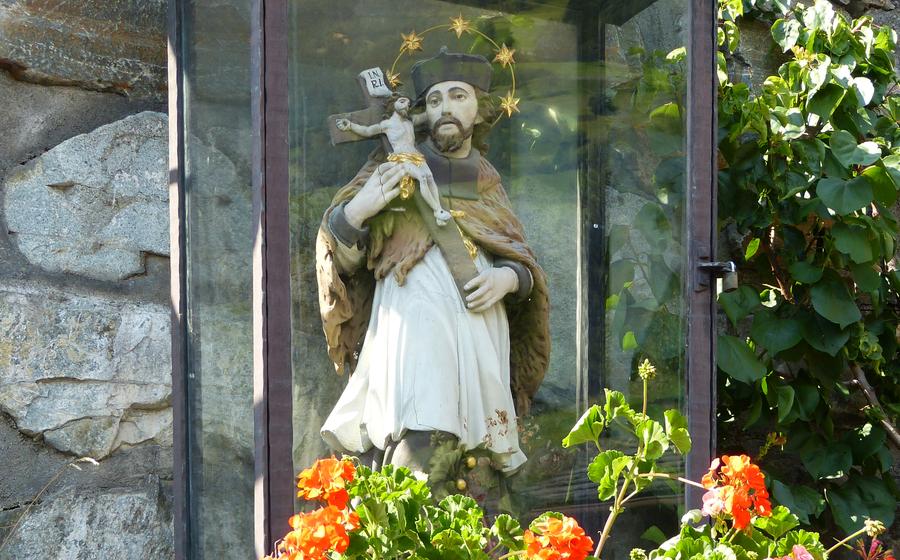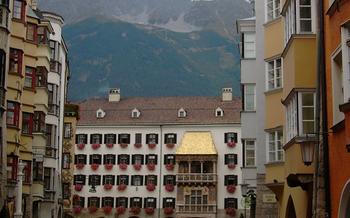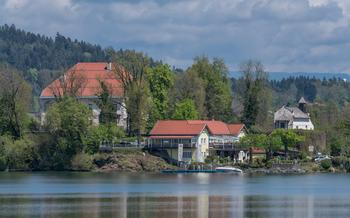
Wildpark Assling
- Embracing Nature’s Wonders at Wildpark Assling
- Diverse Wildlife Encounters
- Observing Wildlife from a Distance
- Understanding Wildlife Behavior
- Learning Opportunities for All Ages
- Photography and Wildlife Watching
- Sustainable Ecotourism Practices:
- Hiking Trails and Nature Walks: Exploring the Wilderness
- Picnic Areas and Refreshments:
- Guided Tours and Special Events
- Accessibility and Facilities
- Seasonal Variations and Weather Considerations
- Conservation Efforts and Research
- Supporting Local Communities
- Insider Tip: Unveiling a Hidden Gem
Embracing Nature’s Wonders at Wildpark Assling
Wildlife conservation is a crucial aspect of preserving biodiversity and ensuring the survival of endangered species. Wildlife parks play a vital role in this endeavor by providing protected habitats for animals that may face threats in the wild. Wildpark Assling is one such park, nestled in the heart of the Austrian Alps. It offers a unique opportunity to observe a diverse range of wildlife in their natural surroundings.
Located in the picturesque town of Matrei in Osttirol, Wildpark Assling is easily accessible by car or public transportation. The park is open year-round, with varying hours of operation depending on the season. Admission fees are reasonable, with discounts available for children, families, and groups.
Visiting Wildpark Assling is an unforgettable experience that allows visitors to connect with nature and witness the beauty of wildlife up close. Whether you're a nature enthusiast, a wildlife photographer, or simply looking for a fun and educational day out, Wildpark Assling has something to offer everyone.
Diverse Wildlife Encounters
Wildpark Assling is home to a diverse array of animal species, each with its unique characteristics and adaptations. Among the most notable residents are the majestic red deer, with their imposing antlers and graceful movements. These herbivores play a crucial role in maintaining the balance of the park's ecosystem by grazing on vegetation and dispersing seeds.
Another highlight of the park is the European brown bear, a powerful and intelligent predator. With its thick fur, humped shoulders, and distinctive facial markings, the brown bear is a symbol of strength and resilience. Visitors can observe these impressive animals as they roam their enclosure, foraging for food and displaying their natural behaviors.
The park also provides a safe haven for wolves, captivating predators known for their social dynamics and hunting prowess. Their piercing eyes, sleek coats, and haunting howls create an unforgettable experience for visitors. Observing the wolves' interactions within their pack offers a glimpse into the intricate social structures of these fascinating animals.
Finally, the elusive lynx, a solitary and secretive feline, adds a touch of mystery to the park. With its tufted ears, piercing gaze, and spotted coat, the lynx is a master of camouflage and stealth. Catching a glimpse of this elusive creature is a rare privilege, but one that makes a visit to Wildpark Assling truly unforgettable.
Observing Wildlife from a Distance
Respecting Wildlife Boundaries: Wildlife parks, like Wildpark Assling, offer the unique opportunity to observe animals in their natural habitat without interfering with their behavior or causing undue stress. Maintaining respectful distances from wildlife is crucial for both the well-being of the animals and the quality of the visitor experience.
Binoculars and Spotting Scopes: To enhance your wildlife viewing experience, consider bringing binoculars or a spotting scope. These optical tools allow you to observe animals from a safe distance, enabling you to study their behavior and physical characteristics in detail.
Minimizing Disturbance: To minimize disturbance to wildlife, avoid making loud noises, sudden movements, or using flash photography. Be patient and allow the animals to go about their daily activities without interference. Remember, you are a guest in their home.
Anecdote: During my visit to Wildpark Assling, I witnessed a heartwarming scene. A family of red deer grazed peacefully in a meadow, unaware of our presence. Using binoculars, we observed the intricate interactions between the mother and her fawns, marveling at the tenderness and care she displayed. This experience taught me the importance of respecting wildlife boundaries and observing them from a distance to preserve the magic of their natural behavior.
Understanding Wildlife Behavior
Wildpark Assling offers a unique opportunity to observe wildlife behavior up close, providing valuable insights into the lives of these fascinating creatures. The animals at the park exhibit a range of fascinating behaviors, from hunting and feeding to territorial displays and social interactions.
Hunting and Feeding: Observing the hunting and feeding behaviors of the animals at Wildpark Assling is a captivating experience. The red deer, for instance, employ a variety of strategies to find food, including grazing, browsing, and occasionally eating small animals. The European brown bears are skilled predators, using their powerful claws and teeth to catch fish and small mammals. The wolves, on the other hand, are social hunters that work together to bring down larger prey.
Territorial Behaviors: Animals at Wildpark Assling have distinct territories that they defend against intruders. The red deer, for example, use vocalizations, body language, and sometimes even physical confrontations to mark and defend their territory. The wolves, being social animals, establish a hierarchy within the pack, with the alpha pair maintaining dominance through various displays of strength and authority.
Social Interactions: The animals at Wildpark Assling exhibit a range of social behaviors, from playful interactions to complex communication. The red deer have a complex social structure, forming herds led by dominant males. The European brown bears are solitary animals, but they occasionally come together to mate or share food sources. The wolves, however, are highly social animals, forming close bonds within their pack and engaging in various forms of communication, such as howling, body language, and scent marking.
Interpreting Behaviors: Understanding the behaviors of the animals at Wildpark Assling is essential for a fulfilling wildlife experience. Visitors can learn to identify signs of aggression, courtship, play, and other behaviors by observing the animals' body language, vocalizations, and interactions with each other. This knowledge not only enhances the enjoyment of wildlife viewing but also fosters a deeper appreciation for the complexity and diversity of animal life.
Learning Opportunities for All Ages
Wildlife parks like Wildpark Assling serve as valuable educational resources for visitors of all ages. The park offers a range of educational programs and activities designed to foster a deeper understanding of wildlife, conservation, and the importance of protecting our natural heritage.
Guided tours led by experienced naturalists provide visitors with insights into the fascinating world of the park's inhabitants. These tours offer opportunities to learn about the animals' behavior, habitats, and ecological roles. Interactive exhibits and displays enhance the learning experience, allowing visitors to engage with multimedia presentations, touch and feel exhibits, and learn about the park's conservation efforts.
Educational workshops and programs are also offered throughout the year, catering to different age groups and interests. Children can participate in fun and educational activities such as wildlife crafts, animal tracking, and nature walks, while adults can attend lectures, workshops, and seminars on various wildlife-related topics.
One memorable experience I had at Wildpark Assling was during a guided tour with a group of schoolchildren. The children were captivated by the stories and facts shared by the naturalist, and their eyes lit up with excitement as they spotted a family of red deer grazing in the distance. The experience sparked their curiosity and inspired many questions about the animals and their habitats.
Through these educational initiatives, Wildpark Assling plays a crucial role in fostering a new generation of conservationists and wildlife enthusiasts. By providing interactive and engaging learning experiences, the park helps visitors develop a deeper appreciation for the natural world and the importance of protecting our planet's biodiversity.
Photography and Wildlife Watching
Wildlife photography is an art form that allows us to capture the beauty and wonder of nature. At Wildpark Assling, photographers of all skill levels can find ample opportunities to take stunning wildlife photos. Whether you're a seasoned professional or just starting, here are some tips to help you capture amazing wildlife shots:
Choose the Right Lens: The choice of lens can make a significant difference in wildlife photography. A telephoto lens with a focal length of at least 200mm is ideal for capturing close-up shots of animals without disturbing them.
Use Natural Light: Whenever possible, use natural light to illuminate your subjects. Avoid using flash, as it can startle animals and ruin your shot.
Practice Patience: Wildlife photography requires patience. Animals are unpredictable, so be prepared to wait for the perfect moment. Observe their behavior and wait for them to come close or engage in interesting activities.
Personal Anecdote: During my last visit to Wildpark Assling, I was fortunate enough to capture a breathtaking photo of a red deer stag silhouetted against the golden sunset. I spent hours waiting for the perfect moment, observing the stag's behavior until it finally presented itself in the most stunning light. The resulting photo is one of my favorites, and it perfectly captures the beauty and majesty of these magnificent creatures.
Sustainable Ecotourism Practices:
Wildpark Assling is committed to sustainable ecotourism practices, recognizing the importance of protecting the natural environment and promoting responsible tourism. The park employs various strategies to minimize its ecological impact and support conservation efforts.
Renewable energy sources, such as solar and hydroelectric power, are utilized to meet the park's energy needs, reducing its carbon footprint. Waste reduction initiatives, including recycling programs and composting, are implemented to minimize the park's waste output. Responsible tourism practices are encouraged among visitors, such as staying on designated trails, respecting wildlife, and avoiding disturbing their natural habitats.
Through these sustainable practices, Wildpark Assling demonstrates its commitment to preserving the delicate balance between wildlife conservation and tourism. Visitors can enjoy the park's natural wonders while knowing that their presence contributes to the protection and preservation of this unique ecosystem.
Anecdote:
During my visit to Wildpark Assling, I witnessed firsthand the positive impact of sustainable tourism. As I strolled through the park, I noticed that visitors were respectful of the wildlife and their surroundings. They remained on designated trails, avoided disturbing the animals, and disposed of their waste responsibly.
One particular moment stood out. I observed a group of children participating in an educational program about wildlife conservation. The guide explained the importance of preserving the park's ecosystem and how visitors could contribute to its protection. The children were engaged and enthusiastic, asking thoughtful questions and demonstrating a genuine interest in wildlife and conservation.
This experience reinforced my belief that sustainable ecotourism can inspire and educate visitors, fostering a sense of responsibility towards the natural world. By embracing sustainable practices, Wildpark Assling sets an admirable example for other wildlife parks and demonstrates how tourism can be a force for good in protecting our planet's biodiversity.
Hiking Trails and Nature Walks: Exploring the Wilderness
Combining wildlife viewing with outdoor activities like hiking and nature walks enhances the overall experience at Wildpark Assling. The park offers a network of well-maintained trails that cater to hikers of all skill levels, allowing visitors to immerse themselves in the beauty of the surrounding nature.
The easy and accessible trails, suitable for families with young children or visitors with limited mobility, meander through the park, providing opportunities to encounter wildlife in their natural habitat. These trails offer gentle slopes and scenic viewpoints, making them ideal for leisurely walks and wildlife spotting.
For more adventurous hikers, challenging trails venture deeper into the park's wilderness, leading to secluded corners and breathtaking panoramic views. These trails traverse diverse terrain, from dense forests to open meadows, revealing the park's rich biodiversity and offering glimpses of elusive wildlife species.
Along the trails, visitors can pause at designated observation points, equipped with information boards that provide insights into the local flora and fauna. These spots offer a chance to rest, enjoy a picnic, and engage in wildlife watching without disturbing the animals.
One unforgettable experience is the guided twilight hike, which takes place during the summer months. As the sun sets, the park transforms into a magical realm, with nocturnal animals emerging from their daytime hiding spots. Led by an experienced guide, hikers can witness the fascinating behavior of these creatures under the starry sky.
Picnic Areas and Refreshments:
Enjoying nature responsibly is paramount, and Wildpark Assling encourages visitors to minimize waste and respect the environment. Designated picnic spots are available within the park, inviting visitors to pack their own snacks and meals to savor amidst the tranquil surroundings. These areas are equipped with tables and benches, providing a comfortable setting to relish a leisurely picnic.
For those who prefer a more convenient option, the park offers a café serving a range of refreshments, including hot and cold beverages, light snacks, and delicious pastries. Visitors can relax and indulge in these culinary delights while basking in the beauty of their natural surroundings.
I vividly recall a summer afternoon when I stumbled upon a secluded picnic spot nestled amidst a grove of ancient trees. The gentle rustling of leaves overhead created a soothing symphony, and the air was filled with the sweet fragrance of wildflowers. As I savored my homemade sandwiches and fresh fruit, I felt a profound sense of serenity, surrounded by the pristine wilderness.
Whether you choose to pack your own picnic or indulge in the café's offerings, Wildpark Assling provides the perfect setting to refuel and recharge while immersing yourself in the wonders of nature.
Guided Tours and Special Events
Guided Tours: Embark on a guided tour to elevate your wildlife experience at Wildpark Assling. Led by knowledgeable naturalists and wildlife experts, these tours offer an immersive journey into the park's diverse ecosystem. Learn about the fascinating behaviors, habitats, and conservation status of the resident wildlife. Guides provide insights into the park's ongoing conservation efforts and answer questions, ensuring a deeper understanding and appreciation of the park's mission.
Special Events: Wildpark Assling hosts a variety of special events throughout the year, providing unique opportunities to connect with nature and wildlife. Attend educational workshops, wildlife photography seminars, or family-friendly events designed to inspire and engage visitors of all ages. These events offer a chance to meet park staff, learn about their work, and participate in hands-on activities that promote wildlife conservation and appreciation.
Anecdote: During a guided tour, our guide pointed out a shy lynx perched high in a tree, its piercing eyes scanning the forest floor. The group held their breath as the lynx gracefully descended, its sleek body moving with effortless agility. The guide explained that this elusive creature is rarely seen by visitors, making this encounter a truly special moment.
Accessibility and Facilities
Wildpark Assling is committed to ensuring that all visitors have an enjoyable and accessible experience. The park features a variety of facilities and services designed to accommodate visitors with disabilities, including ramps, accessible trails, and adapted restrooms. These facilities allow individuals with mobility impairments to fully participate in the park's offerings, enabling them to observe wildlife, explore the natural surroundings, and learn about conservation efforts.
One heartwarming anecdote highlights the park's commitment to accessibility. A family with a young son who used a wheelchair visited Wildpark Assling. The staff went above and beyond to ensure their comfort and enjoyment, providing them with a map of accessible trails and offering to assist with any special requests. The family was thrilled to be able to experience the park together, creating lasting memories that celebrated their son's abilities rather than his limitations.
Seasonal Variations and Weather Considerations
Wildpark Assling offers a diverse wildlife experience throughout the year, as the seasons bring about changes in animal behavior and activity levels.
Spring: The park comes alive in spring as animals emerge from their winter dens and begin to court and breed. This is an excellent time to observe courtship rituals, such as the red deer's impressive antler displays or the playful antics of wolf pups.
Summer: The summer months offer warm weather and long daylight hours, making it ideal for wildlife viewing. Animals are often seen grazing in the meadows, basking in the sun, or cooling off in the water. Summer is also a great time to spot newborn animals, such as bear cubs or lynx kittens.
Autumn: As the days grow shorter and the temperatures cool, animals begin to prepare for winter. This is a time of increased activity as they gather food and build up their fat reserves. Visitors may witness animals storing food for the winter, such as squirrels hiding nuts or bears caching berries.
Winter: The park takes on a magical atmosphere in winter, with snow-covered landscapes and the animals adapted to the cold weather. Visitors can observe animals using their thick fur coats and specialized behaviors to survive the winter, such as wolves huddling together for warmth or lynx hunting in the snow.
It's essential to consider weather conditions when planning a visit to Wildpark Assling. While the park is open year-round, some trails and facilities may be closed or limited during adverse weather conditions. Always check the park's website or contact the visitor center for the latest information before your visit.
Conservation Efforts and Research
Wildpark Assling is not just a wildlife sanctuary but also a hub for conservation research and monitoring programs. Scientists and researchers work tirelessly to study the behavior, ecology, and genetics of the park's animals. This valuable research contributes to the global understanding and conservation of these species.
One of the ongoing projects at Wildpark Assling is the monitoring of the red deer population. Researchers collect data on deer behavior, movement patterns, and habitat use to gain insights into their population dynamics and ensure their long-term survival.
The park is also involved in habitat restoration efforts, creating and maintaining suitable habitats for the animals. This includes planting native vegetation, managing water sources, and controlling invasive species. By providing a thriving natural environment, Wildpark Assling helps to protect and preserve the biodiversity of the region.
Moreover, the park actively participates in reintroduction programs, aiming to restore populations of endangered species to their natural habitats. Through careful planning and collaboration with other organizations, Wildpark Assling has successfully reintroduced several species, including the European brown bear and the lynx, to the Austrian Alps.
These conservation efforts at Wildpark Assling not only benefit the animals within the park but also contribute to the broader conservation landscape. By advancing scientific knowledge and implementing effective conservation strategies, the park plays a vital role in protecting and preserving the rich wildlife heritage of Austria and beyond.
Supporting Local Communities
Wildpark Assling plays a vital role in supporting the local communities of Matrei in Osttirol and the surrounding region. The park provides employment opportunities for local residents, directly and indirectly, through jobs in park management, hospitality, and tourism-related services. Additionally, the park attracts visitors from around the world, generating tourism revenue that benefits local businesses such as hotels, restaurants, and shops. Wildpark Assling also collaborates with local schools and organizations to promote environmental education and conservation awareness, fostering a sense of stewardship among the younger generation.
Here's an anecdote that illustrates the positive impact of the park on the local community:
When I visited Wildpark Assling, I had the opportunity to meet with a local farmer named Franz, who owns a small dairy farm just outside the park. Franz told me that since the park opened, he has seen an increase in tourism to the area, which has benefited his business. Tourists often stop by his farm to buy fresh milk, cheese, and other dairy products. Franz is grateful for the park, as it has helped him to supplement his income and provide a better life for his family.
Insider Tip: Unveiling a Hidden Gem
Tucked away in a secluded corner of Wildpark Assling lies a hidden gem that offers a truly unforgettable wildlife experience. Follow a narrow path that meanders through dense foliage, and you'll stumble upon a tranquil pond teeming with life. Here, you can observe a symphony of nature's wonders as ducks glide across the water, fish leap out of the depths, and dragonflies dance in the air.
I remember my first encounter with this hidden pond. As I approached, I noticed a family of deer grazing peacefully nearby. Their presence added an air of serenity to the scene, and I couldn't help but feel a deep connection with the natural world.
Take your time here, sit back, and immerse yourself in the tranquility of this hidden sanctuary. Let the sounds of nature wash over you, and allow yourself to be captivated by the beauty and wonder that surrounds you. This is a place where time stands still, and memories are made that will last a lifetime.









